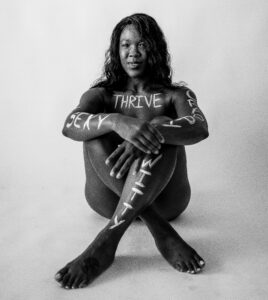Believe it or not, consent is more than just ‘yes’ and ‘no.’ And if we want healthier, safer, and more empowering sexual experiences, we need to stop treating it like a checkbox.
Let’s Start With the Basics
Consent is defined as permission for something to happen or an agreement to do something. In sexual and intimate spaces, we often treat consent as a binary: you either give it or you don’t. One person is active, the other is passive. Someone initiates, someone responds.
But sex is never that simple—and neither is consent.
When we limit our understanding to just two options, we ignore the complex reality of most sexual encounters. Worse, we create a world where the only alternatives to consent are coercion, discomfort, or assault.
But what about all the experiences that don’t quite meet the legal threshold of assault—but still leave someone feeling violated, disrespected, or unseen?
Enter the Grey Area: Understanding Violation
Popular sex columnist Dan Savage introduced the idea of a spectrum between consent and assault—a messy, grey area where many sexual experiences live.
This is where violation comes in.
Violation includes any sexual experience where consent is technically given but not fully felt. Maybe there was pressure. Maybe there was confusion. Maybe you said “yes” but meant “I don’t know” or “I guess.”
And here’s the kicker: anyone can violate someone’s boundaries—even with the best of intentions. And anyone can feel violated, even if they said “yes.”
Why This Matters
We live in a culture with shame-based, incomplete sex education. We’re taught to value performance over pleasure, obligation over autonomy, and assumptions over communication.
Many of us enter sex disconnected from our bodies—unsure of what we want, unable to communicate it, and afraid to ask for more. We confuse fantasy with desire. We confuse pressure with passion. We operate from a script rather than an honest, embodied place.
And when it goes wrong? We’re told to suck it up because we “technically consented.”
The Problem With Binary Consent
When we treat consent as a yes/no equation, we invalidate a huge spectrum of human experience. We silence the people who feel uneasy after sex, but don’t have language for why. We dismiss the moments that feel off, awkward, or heavy as “just bad sex.”
This mindset holds us back from creating truly consensual, connected, and joyful sex lives.
What True Consent Requires
Consent must be dynamic and contextual. It requires:
-
Ongoing communication
-
Emotional and bodily awareness
-
The freedom to change your mind
-
The ability to name and negotiate wants, needs, and boundaries
It also requires sex education that doesn’t just focus on preventing assault—but teaches people how to have great, ethical, and mutually satisfying sex.
If we want to cultivate erotic freedom, pleasure, and play, we need to stop asking, “Did you get consent?” and start asking, “Did everyone feel respected, safe, and free to choose?”
Because consent has never just been about ‘yes’ or ‘no.’ It’s about power, presence, and partnership.











